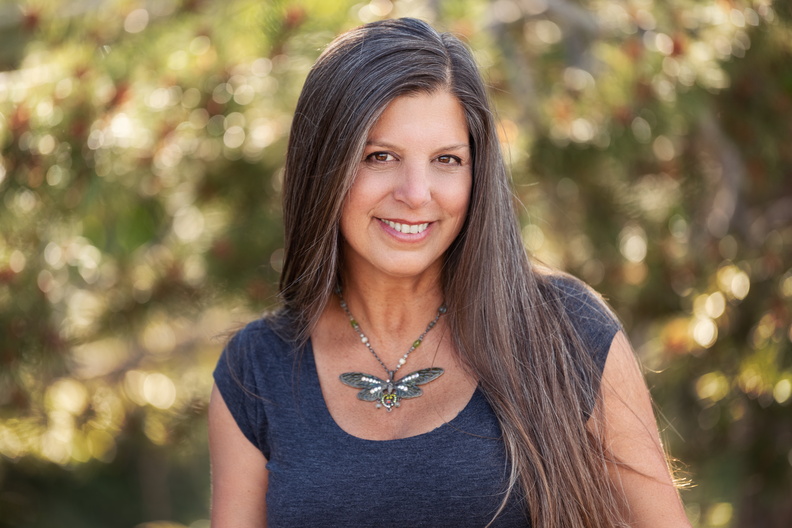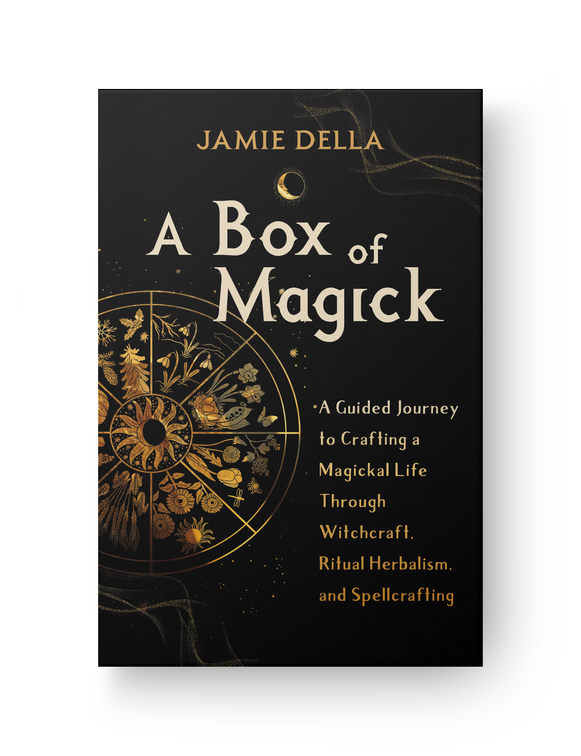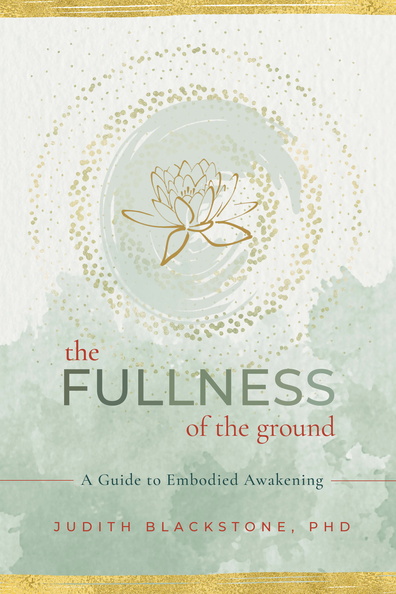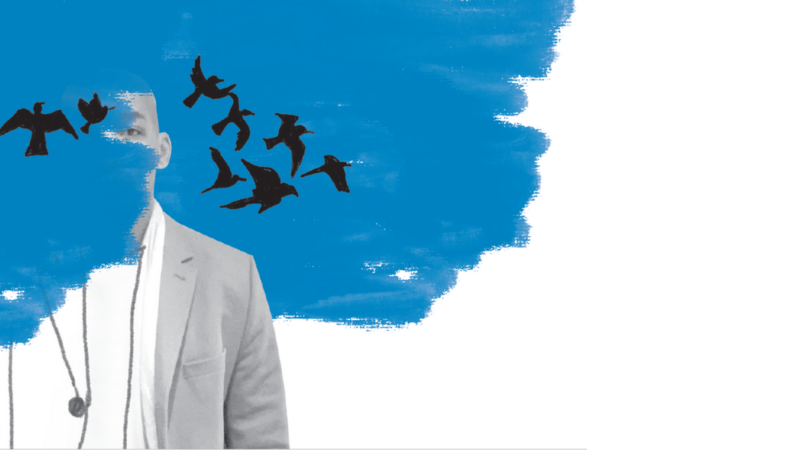Learn to walk the profound journey of healing individual, ancestral, and collective trauma
We are facing what is perhaps the greatest civilizational crisis of our time, the global ecological emergency. If the underlying challenge to climate change (and other systemic social problems) can be traced to human disrelation—a state of being out of accordance with nature, ourselves, and other humans—then I propose it to be a fundamentally spiritual problem, as much as an environmental, scientific, technological, cultural, psychological, economic, or historical one. At the root of this spiritual problem is collective trauma.
My work as a teacher over the past 20 years has focused on the integration of science and mysticism. Over time, as my training programs and retreats developed what emerged was a clear need to address collective trauma.
Attuned: Practicing Interdependence to Heal Our Trauma—and Our World is a guide for anyone committed to the healing of our struggling world. With practical instruction on reducing stress and building resilience, along with practices such as transparent communication, my book is intended to support each of us and our communities in embracing our interdependence. As you learn to attune to others, you begin to refine your capacity to relate — and to walk the profound journey of healing individual, ancestral, and collective trauma.
The complexity of challenges we face in the 21st century demands a new level of human collaboration. To respond with creativity and innovation to these challenges, we must think holistically. In this way, we awaken our most intrinsic biological gifts: the powers of our soul’s intelligence – that which inside us knows how to heal and restore.
Perhaps, rather than finding ourselves alive in a time of exponential, unstoppable decline, we will discover the power to access the evolutionary gifts that appear dormant in us. To accomplish this, I believe we must do it together—not separately, but in relation, as communities dedicated to healing our collectives.
It may take only a small number of us to establish a new level of collective coherence—to share our light, heal our wounds, and realize the unawakened potential of our world. Will you join me on this journey of attunement?
With gratitude,
Thomas Hübl
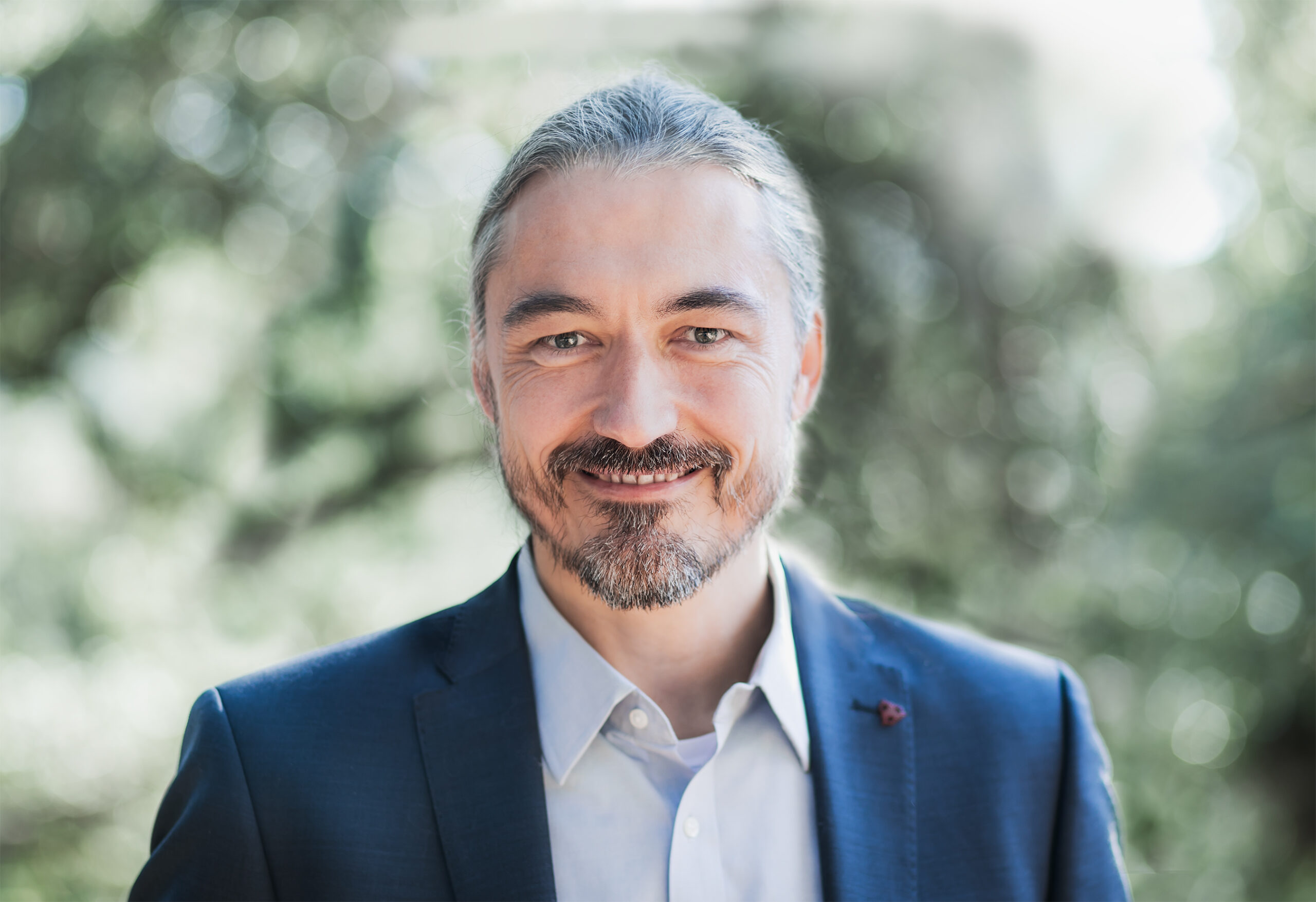
Thomas Hübl, PhD, is a renowned teacher, author, and international facilitator who works within the complexity of systems and cultural change by integrating modern science with the insights of humanity’s wisdom traditions. Since the early 2000s, he has led large-scale events on the healing of collective trauma, with a special focus on the shared history of Israelis and Germans, and facilitated healing and dialogue around racism, oppression, colonialism, and genocide, among other topics. He is the author of Healing Collective Trauma and Attuned (both with Julie Jordan Avritt). He has served as an advisor and guest faculty for universities and organizations, and he is currently a visiting scholar at Harvard University’s Wyss Institute. For more, visit www.attunedbook.com.

Learn More
Amazon | Barnes & Noble | Bookshop | Sounds True
A Path to Embodied Nonduality
We find ourselves in a time that is rich with paths toward spiritual awakening, especially that pinnacle of awakening called “nonduality.”
The Fullness of the Ground is my contribution to that abundance. It describes in detail the lived experience of nondual realization.
In the book, I offer a series of gentle attunement practices, called the Realization Process, for uncovering and knowing ourselves as a fundamental, undivided dimension of consciousness, pervading our whole body and environment. Pervading our body, fundamental consciousness is experienced as the authentic ground of our individual being. Pervading our body and environment, it is the basis of our oneness with everyone and everything around us. This means that we become whole as individuals at the same time as we transcend our individuality and experience unity with our surroundings.
As a longtime spiritual teacher and psychotherapist, I feel that there is not enough emphasis in some of the nonduality teachings about how this realization enriches our lives. I have been particularly concerned about teachings that encourage people to disconnect from themselves as individuals or to suppress their emotional responses to the world around them. In this book, I instead offer a path to nondual realization that is deeply embodied and that matures us as individuals, at the same time that it opens us to self–other oneness. Far from erasing us as individuals, nondual realization enhances our experience of our own unique existence. It deepens all of our human capacities, including our ability to feel, to think, and to enjoy our lives. It can help heal and enhance our relationships with other people by enabling us to experience deep contact with others without losing inward contact with ourselves.
Central to the method in this book is the important difference between being aware of the body and inhabiting the body. So I often begin with this simple exercise for experiencing this distinction:
Sit upright with your hands in your lap.
Take a moment to become aware of your hands. You may notice how warm or cold they are or how tense or relaxed they are. This is becoming aware of your hands.
Now enter into your hands. Experience yourself as present, living within your hands. This is inhabiting your hands.
You can go on to inhabiting different parts of your body and, finally, your body as a whole. See if you can feel present everywhere within your body, rather than aware of it from the outside.
In the Realization Process, we go through several steps, taking around 30 minutes, to reach this next part. But, for a very shortened version, if you can feel that you are living within your body, then next find the space outside of your body, the space in your environment.
Let yourself experience that the space inside and outside of your body is the same undivided space. Without leaving your body, experience that the space that pervades your body also pervades your whole environment. This is the spacious expanse of fundamental consciousness.
Judith Blackstone, PhD
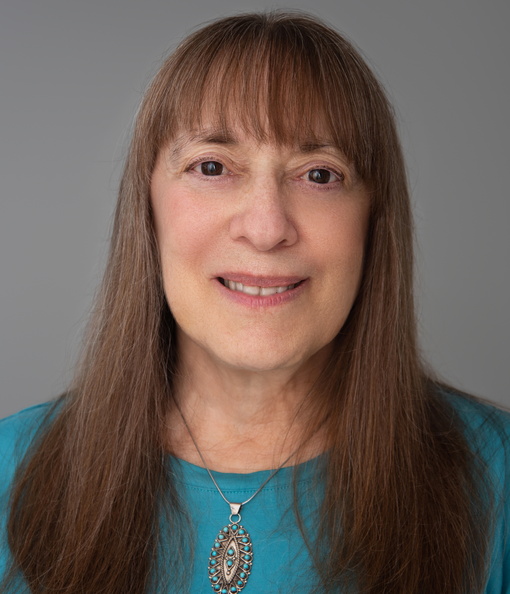
Judith Blackstone, PhD, is a psychotherapist and innovative teacher in contemporary spirituality. She developed the Realization Process®, an embodied approach to personal and relational healing and nondual realization. She is the author of Trauma and the Unbound Body, Belonging Here, The Intimate Life, The Enlightenment Process, and The Empathic Ground.
Five Dos and Don’ts for the Minimalism-Curious
My recent book Travel Light is a how-to guide for the practice of what I call “Spiritual Minimalism,” which is not to be confused with regular old minimalism.
Long story short, in 2018, I was living in a beautiful two-bedroom apartment in Venice Beach when I felt an inner calling to get rid of everything that didn’t fit inside of my 22-inch carry-on bag. My bag would effectively become my new apartment as I would begin living nomadically around the world.
It took me 30 days’ worth of yard sales and Craigslist posts to get rid of over four decades of furniture, art, photo albums, yearbooks, letters, clothing, knickknacks, winter coats, books, my cars, Vespa, and everything else.
And about six months into my nomadic journey, I realized something: I still had too much stuff. So I got rid of the carry-on bag and downsized into a backpack. And now, five-plus years later, I’m still happily living from a backpack as I continue to hop around the world, from hotels to Airbnbs to friends’ extra bedrooms.
Travel Light is written for those who also feel called to live with less, but you’re not sure where or how to start. Truth be told, there are numerous ways to start, depending on your individual situation.
If this approach intrigues you, I want to share five common mistakes many new minimalists make—and a handful of simple recommendations to get you started on a more mindful, purposeful minimalism journey:
Don’t get rid of too much too fast
Although I completely emptied my entire two-bedroom apartment within 30 days, I had been intentionally prepping to live from a carry-on bag over the previous year by experimenting with taking only what I actually used while on my dozens of work trips. So in 2018, getting rid of my stuff was merely the final step in a long progression of steps.
My first recommendation is to go slow. Decide what sort of end result you desire, and start experimenting with what it would be like to only use what you envision keeping. Maybe get a storage room and put a handful of items in it each week until you run out of things you don’t use. Otherwise, going too fast could prove to be unsustainable and discouraging.
Don’t make it about the external space
Getting rid of clutter doesn’t resolve deep emotional wounds or past trauma. And some of that could be the root cause of why you engage in retail therapy or why you may cling to stuff you don’t use or wear. And until you start doing deeper work on yourself, you can live in the most minimal-looking setting, but still feel cluttered inside.
Commit to daily meditation as a means of efficiently releasing stress, and engage in other inner work, such as therapy, journaling, seva (service), and daily gratitude practices to clear away the internal clutter. This is what is meant by Spiritual Minimalism. It’s minimalism practiced from the inside-out.
Don’t treat minimalism as a one-time experience
Minimalism is less of an act, like Spring cleaning, and more of a lifestyle, like getting into shape. It doesn’t end once you get rid of your stuff. Like being in shape, minimalism continues to inform what you do, how you do it, where you go, why, and pretty much every other choice you make in life. In other words, you recognize that every choice you make is either supporting the lifestyle or taking away from the lifestyle.
Start seeing everything you do (big and small) as an opportunity to reinforce the minimalist mindset, and make choices that support your desired mindset.
Don’t forget to adopt a larger purpose Getting rid of stuff for the sake of looking like a minimalist is ultimately unfulfilling, and it’s recommended to adopt a larger purpose for your minimalism adventure. That way, you will bring more enthusiasm and passion into your minimalism choices. You’re not just getting rid of something for the sake of getting rid of it. It’s going to help you by making space to exercise, create content, or to use as the meditation corner of your home.
My recommendation is to answer this question: How does becoming a minimalist help you help others? The answer is a clue into your purpose, and just know that there is no wrong answer. Or rather, it’s an ever-evolving answer that will come into greater focus as you begin your journey. All you need for now is a loose idea of your why.
Don’t compare yourself to others
The quickest way to make minimalism a drag is to compare yourself to other, more popular minimalists. It’s certainly good to be informed of best minimalism practices and get tips from minimalist influencers, but their paths or suggestions may not work as well for your situation.
Be open to blazing your own path into minimalism, and be willing to adjust along the way. If you treat the entire thing as a learning experience, there are no mistakes. And you’ll have a lot more fun along the way.
For more tips and insights on the ways of the Spiritual Minimalist, I invite you to check out Travel Light: Spiritual Minimalism to Live a More Fulfilled Life.
Light Watkins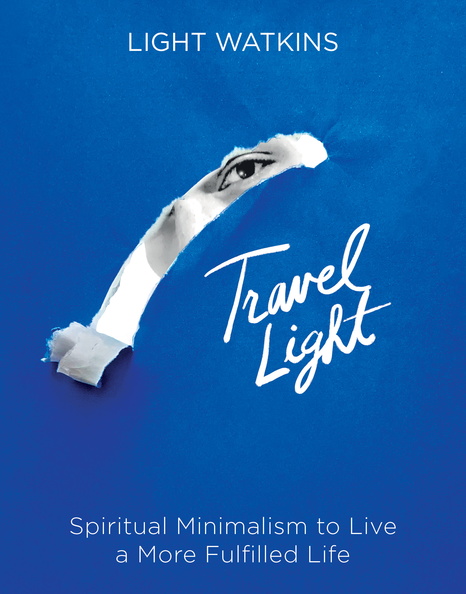
Learn More
Amazon | Barnes & Noble | Bookshop | Sounds True
Turn your understanding of meditation inside out and upside down
Meditation has found a home in the West. Countless scientific studies tout its benefits, and a multitude of students proclaim its life-changing value. I am one of those students. For over forty-five years I have practiced this ancient art, and I continue to reap its remarkable rewards. While I remain a follower of many wisdom traditions, and believe that no one has a patent on truth, thirty years ago I took refuge in Buddhism. The adage “Chase two rabbits; catch none” points out the necessity of commitment, and the dangers of spreading yourself too thin.
My passion for meditation led me into the traditional Tibetan three-year retreat, where I became a monk with robes and a shaved head, meditating fourteen hours a day in a remote monastery. I even slept sitting up in meditation posture, practicing the nocturnal meditations of dream and sleep yoga. Three-year retreat is like a meditation university, providing the opportunity to practice dozens of meditations in the most nurturing environment. It remains the most transformative experience of my life.
Of the many practices I was introduced to in retreat, one meditation stands out: the quirky, intense, multifaceted, and revolutionary practice of reverse meditation. I learned these practices within the context of Mahāmudrā (Sanskrit for “great seal”), a lofty tradition in Tibetan Buddhism that explores the nature of the mind. This was over twenty years ago, and since then these radical meditations have become a cornerstone of my spiritual path.
They’re called “reverse” meditation for a number of reasons. First, these practices are the opposite, or reverse, of what many of us associate with meditation. Most people think that meditation is about feeling good, getting “Zen,” or otherwise chilling out. But this is just one small aspect of meditation. Complete meditation is not about feeling good—it’s about getting real. And getting real requires dealing with the reality of difficult situations.
Second, these unique meditations are designed to reverse our relationship to unwanted experiences, which means going directly into them instead of avoiding them. In so doing we can discover the basic goodness of whatever arises, which is deeper than interpretative goodness. Basic goodness refers to the ineffable “suchness, isness, thatness” of whatever occurs—good or bad.
If we capitulate to our usual avoidance strategies, we push the acute, conscious psychological discomfort of avoidance into becoming a chronic, unconscious mental cramp. The discomfort is still there, but now it’s buried deep in our body-mind matrix, where it works backstage to dictate much of our onstage life. The rejected experience then manifests symptomatically—it becomes an undiagnosed reflection of an underlying discord that expresses itself in virtually everything we do. Our actions then become evasion tactics—reactivity, psychological duress, physical illness, and all manner of unskillful responses to the challenges of life—as we try to skirt these buried, uncomfortable feelings.
The reverse meditations give us the opportunity to relate to our mind instead of from it—and also to establish a relationship to our evasion tactics, which otherwise become obstacles that act like scar tissue to sequester the unwanted experience from consciousness. Relating from our mind, from our reactivity, is no relationship at all. In place of conscious relationship, we respond with knee-jerk reflexes to difficult experience, a reactivity that kicks us out of our feeling body and into our thinking head, and into unnecessary suffering. Instead of dealing authentically with the challenging somatic sensation, we leap into inauthentic conceptual proliferation (confabulating and catastrophizing) to buffer ourselves from the discomfort of our feelings. We run from the honest pain and real news that come with being human, and into dishonest commentary and fake news. The truth is that many of the worst things in our life are things that never really “happened”!
Third, the reverse meditations upend our sense of meditation altogether. They represent a revolution in spiritual practice that turns our understanding of meditation inside out and upside down, and therefore radically expand our practice. Situations that were once antithetical to meditation now become our meditation. Obstacles that previously obstructed our spiritual path now become our path. This means that everything becomes our meditation. Nothing is forbidden. We can enter lifetime retreat in the midst of ordinary life.
Excerpted from Reverse Meditation: How to Use Your Pain and Most Difficult Emotions as the Doorway to Inner Freedom by Andrew Holecek.

Andrew Holecek is an author, speaker, and humanitarian who offers seminars internationally on meditation, lucid dreaming, and the art of dying. His work has appeared in Psychology Today, Parabola, Lion’s Roar, Tricycle, Utne Reader, Buddhadharma, Light of Consciousness, and many other periodicals. Learn more at andrewholecek.com.
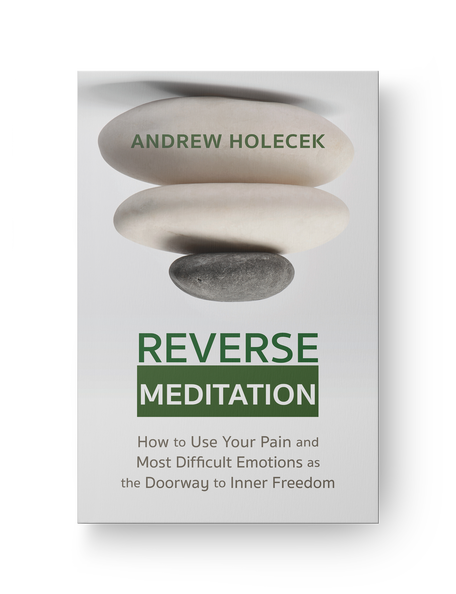
Learn More
Amazon | Barnes & Noble | Bookshop | Sounds True
Tibetan Buddhist Practice for Developing Compassion
Take a few minutes to sit peacefully with your eyes closed or looking down. Observe your breath as you breathe in and out.
- Allow yourself to breathe naturally, without any modification of the breath.
For a few minutes, simply observe your breath in its most natural state, as it passes through your nostrils.
If you find that you are distracted by your thoughts or sounds, no problem; just go back to observing your breath.
In your mind, see a table. In English, it is described by the word “table.” This table is made up of many pieces: a top, legs, glue, nails, and varnish. The legs and top are made up of wood from a tree. Before the tree was cut down it grew as a result of many variables—sunlight, seeds, rain, earth, and wind, to name just a few. And before it was a tree, it was a seed from another tree, and another tree before that. What about the nails or the varnish? Those items can also be traced backward to the people, companies, and components that went into their production. And the people who created the components also came into being from their parents, and their parents before them. We now see that everything around us—all phenomena—were caused by something that preceded it and can be traced back to a beginningless time. Next time, pick another thing, place, or person and go through the same logic. As you go about your day, notice everything around you and apply the same logic. When you walk around your work or home environment, notice that everything is empty of inherent existence. Everything has a name that refers to a thing that comes together for a time.
Zen teacher Norman Fischer said:
- In the end everything is just designation: things have a kind of reality in their being named and conceptualized, but otherwise they actually aren’t there in the way we think they are. That is, connection is all you find, with no things that are connected.[. . .] It’s the very thoroughness of the connection—without gaps or lumps in it—only the constant nexus wherever you turn—that renders everything void. So everything is empty and connected or empty because connected. Emptiness is connection.



